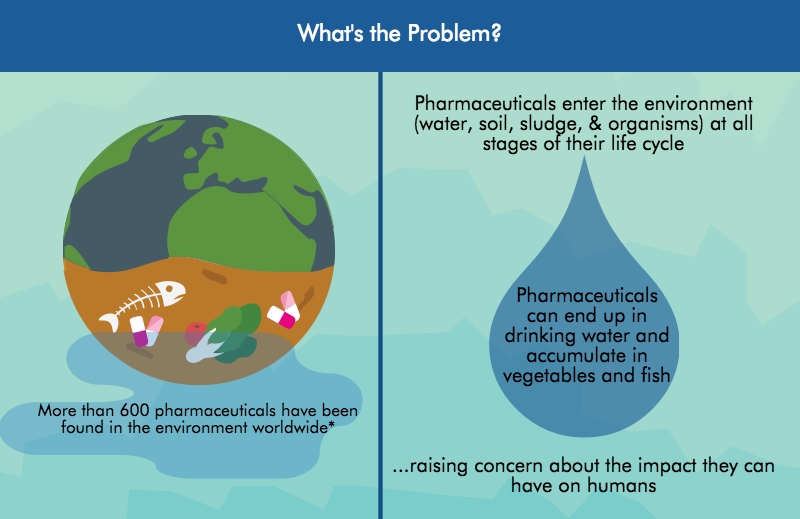Pharmaceuticals in the Environment
 Pharmaceutical residues have been found in various environmental media throughout the world and concern is increasing about the harm these might be doing to human health and the environment. With an expected increase in medicine consumption in Europe due to a higher demand from ageing populations and a general growing dependence on pharmaceutical drugs, pharmaceuticals are a priority area from an environmental health perspective.
Pharmaceutical residues have been found in various environmental media throughout the world and concern is increasing about the harm these might be doing to human health and the environment. With an expected increase in medicine consumption in Europe due to a higher demand from ageing populations and a general growing dependence on pharmaceutical drugs, pharmaceuticals are a priority area from an environmental health perspective.
The majority of pharmaceutical residues come from industry production - leftovers not properly disposed of or those that pass through the human body - end up in wastewater treatment facilities. At present, most wastewater treatment facilities are not able to completely degrade or retain these substances, the remainder, even if heavily diluted, may find its way into rivers or agriculture fields and may cause permanent damage to especially sensitive organisms.
The healthcare sector is undertaking numerous upstream initiatives globally to reduce the harmful effects of pharmaceutical residues. These include encouraging pharmaceutical companies to green their production methods and to achieve a one-step disposal, where drugs are fully metabolised in the body and break down immediately in the environment to harmless, informing patients about safe disposal methods for unused or expired medicines and by reducing prescribing, and choosing the least environmental-hazardous medicines.
See the Pharmaceutical Pollution: FAQ page, to find the answers to frequently asked questions about this issue, and learn more from our infographic:

